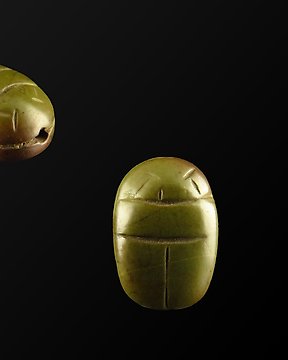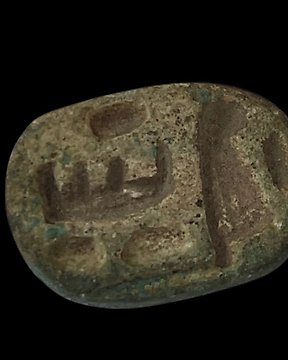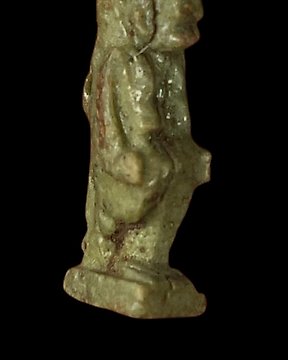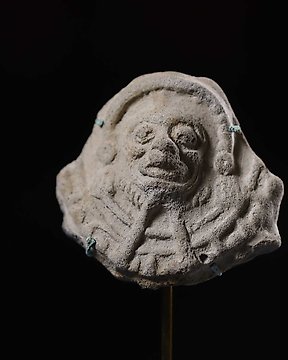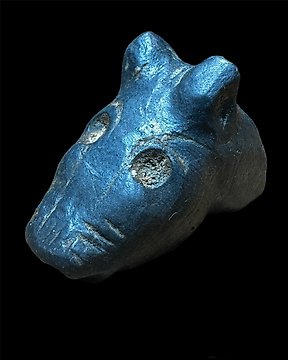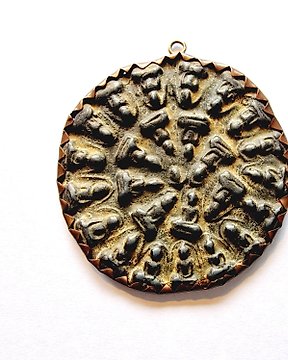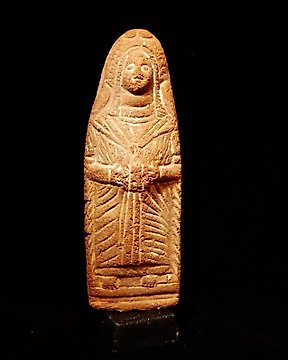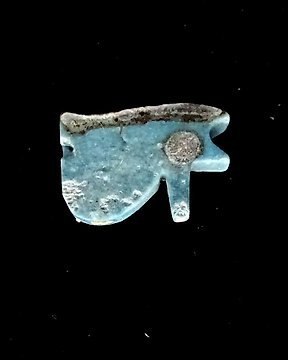
Ancient Egyptian - Oudjat eye in turquoise earthenware - 664/332 BC
Catawiki is continuously updating its technology. You are currently using an outdated browser. To optimise your browsing experience, please update your browser.
You can set your cookie preferences using the toggles below. You can update your preferences, withdraw your consent at any time, and see a detailed description of the types of cookies we and our partners use in our Cookie Policy.
No. 83493457
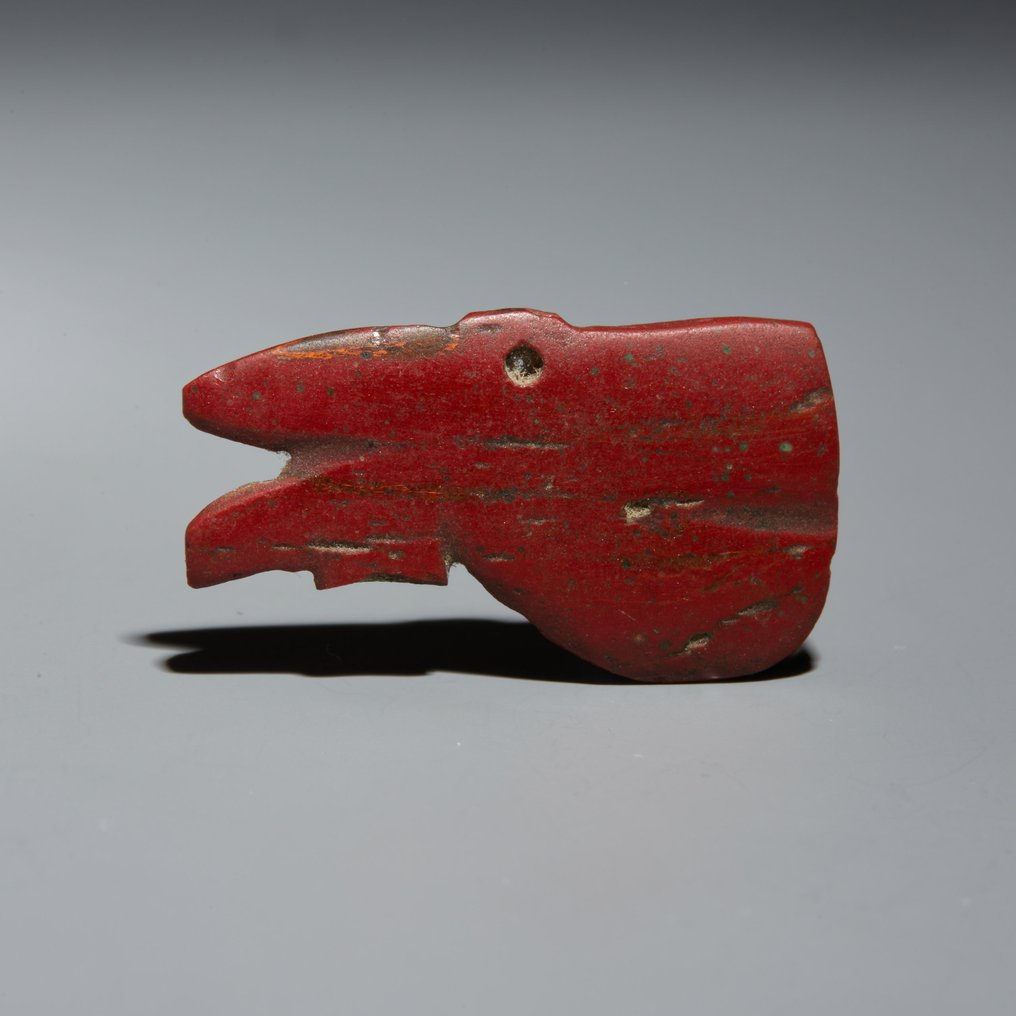
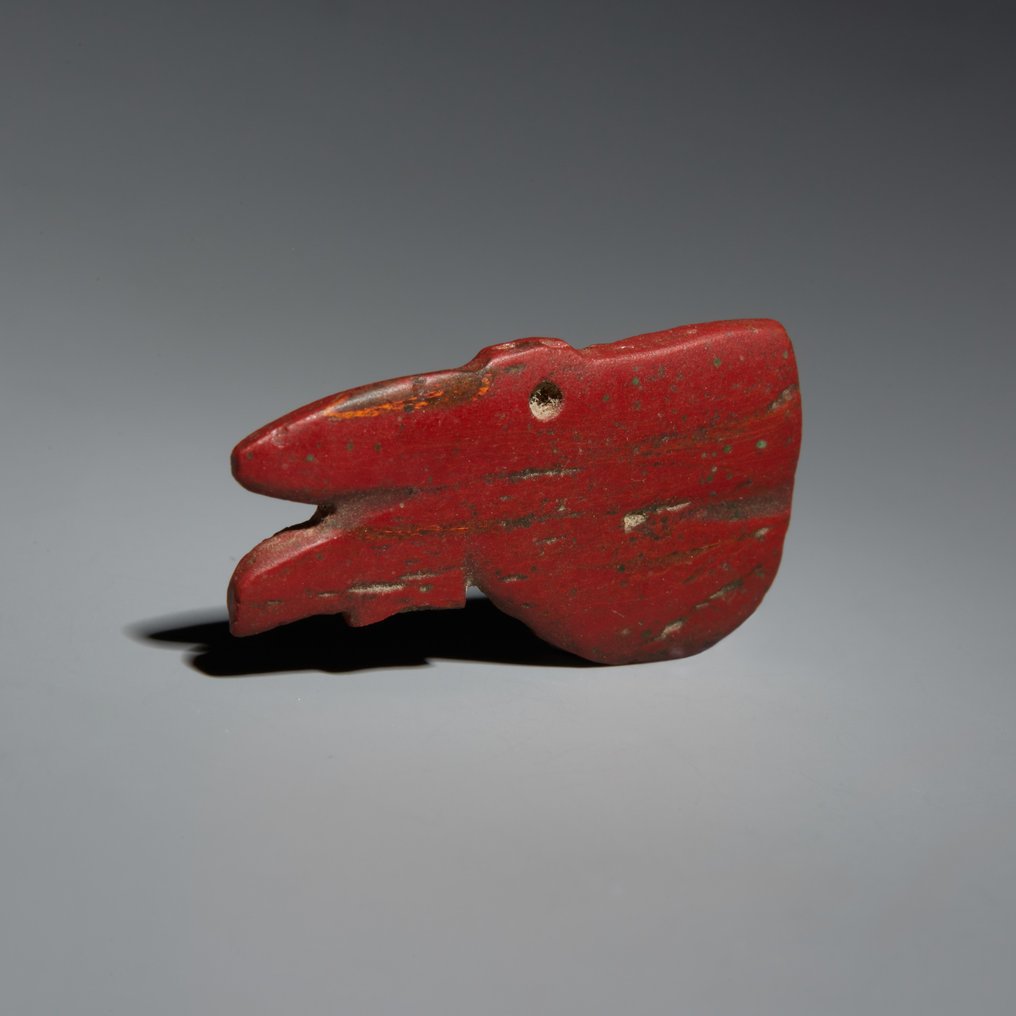
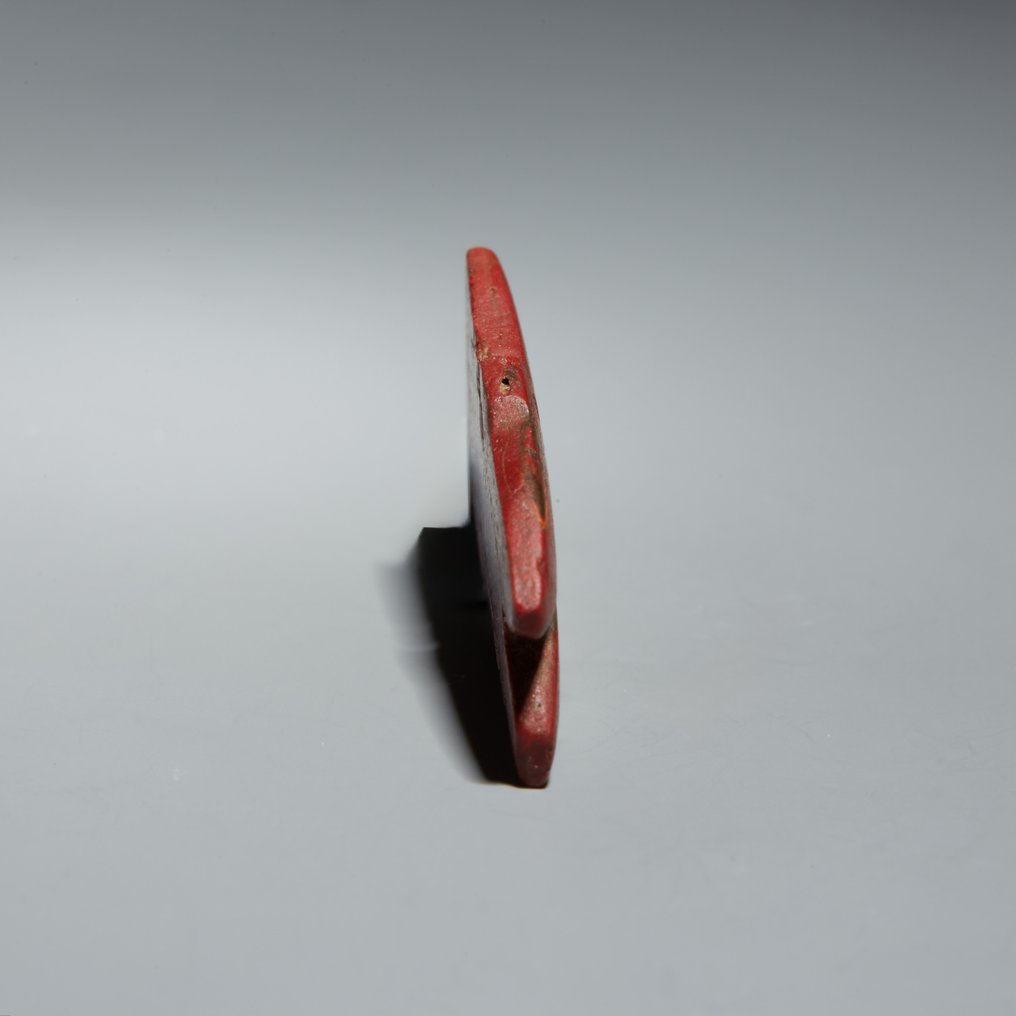
Udjat Amulet
Ancient Egypt, Late Period, 664 - 332 BC
MATERIAL: Jasper.
SIZE: Length 3.5 cm
PROVENANCE: Private collection, Rennes, France. 1970.
CONDITION: Good condition. The ocular appendage of the eye of Horus is missing.
DESCRIPTION:
The eye of Horus is an ancient Egyptian symbol of protection, royal power, and good health. The Eye of Horus is similar to the Eye of Ra, which belongs to a different god, Ra, but represents many of the same concepts.
Funerary amulets were often made in the shape of the Eye of Horus. The symbol "was intended to protect the pharaoh [here] in the afterlife" and to ward off evil. Ancient Egyptian and Middle-Eastern sailors would frequently paint the symbol on the bows of their vessels to ensure safe sea travel.
Amulets in Ancient Egypt were both decorative and practical, as they were considered as having apotropaic powers to protect or bestow power upon the wearer. Not only worn by the living, amulets have been found inside the wrappings of mummies, as they were used to prepare the deceased for the afterlife.
Amulets held different meanings, depending on their type or form. Small amulets depicting gods and goddesses seem to have induced the protective powers of the deity. On the other hand, small representations of anatomical features or creatures suggest that the wearer required protection over a specific body part, or that he/she desired the skills of a particular animal. Amulets depicting animals were very common in the Old Kingdom Period, whilst representations of deities gained popularity in the Middle Kingdom.
Notes:
- The piece includes authenticity certificate.
- The piece includes Spanish Export License.
- The seller guarantees that he acquired this piece according to all national and international laws related to the ownership of cultural property. Provenance statement seen by Catawiki.
THE MINISTRY OF CULTURE FROM SPAIN ASKS ALL SELLERS FOR INVOICES OR OTHER DOCUMENTATION ABLE TO PROVE THE LEGALITY OF EACH ITEM BEFORE PROVIDING AN IMPORT OR EXPORT LICENSE.
Udjat Amulet
Ancient Egypt, Late Period, 664 - 332 BC
MATERIAL: Jasper.
SIZE: Length 3.5 cm
PROVENANCE: Private collection, Rennes, France. 1970.
CONDITION: Good condition. The ocular appendage of the eye of Horus is missing.
DESCRIPTION:
The eye of Horus is an ancient Egyptian symbol of protection, royal power, and good health. The Eye of Horus is similar to the Eye of Ra, which belongs to a different god, Ra, but represents many of the same concepts.
Funerary amulets were often made in the shape of the Eye of Horus. The symbol "was intended to protect the pharaoh [here] in the afterlife" and to ward off evil. Ancient Egyptian and Middle-Eastern sailors would frequently paint the symbol on the bows of their vessels to ensure safe sea travel.
Amulets in Ancient Egypt were both decorative and practical, as they were considered as having apotropaic powers to protect or bestow power upon the wearer. Not only worn by the living, amulets have been found inside the wrappings of mummies, as they were used to prepare the deceased for the afterlife.
Amulets held different meanings, depending on their type or form. Small amulets depicting gods and goddesses seem to have induced the protective powers of the deity. On the other hand, small representations of anatomical features or creatures suggest that the wearer required protection over a specific body part, or that he/she desired the skills of a particular animal. Amulets depicting animals were very common in the Old Kingdom Period, whilst representations of deities gained popularity in the Middle Kingdom.
Notes:
- The piece includes authenticity certificate.
- The piece includes Spanish Export License.
- The seller guarantees that he acquired this piece according to all national and international laws related to the ownership of cultural property. Provenance statement seen by Catawiki.
THE MINISTRY OF CULTURE FROM SPAIN ASKS ALL SELLERS FOR INVOICES OR OTHER DOCUMENTATION ABLE TO PROVE THE LEGALITY OF EACH ITEM BEFORE PROVIDING AN IMPORT OR EXPORT LICENSE.
